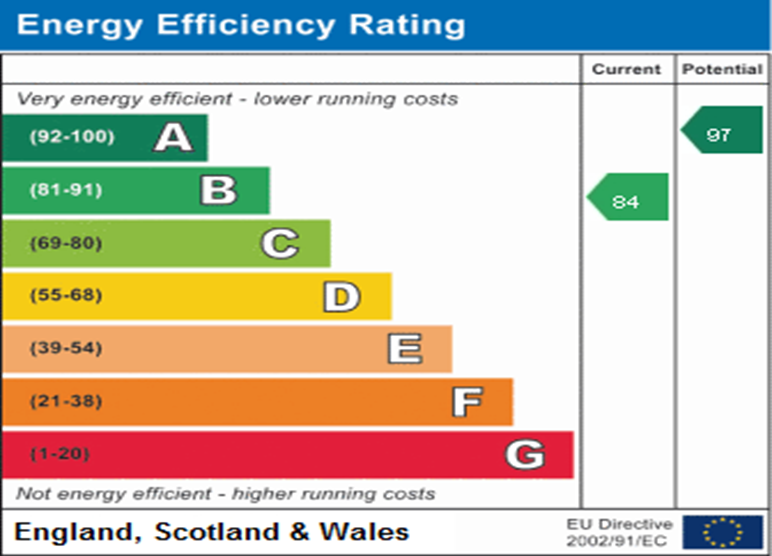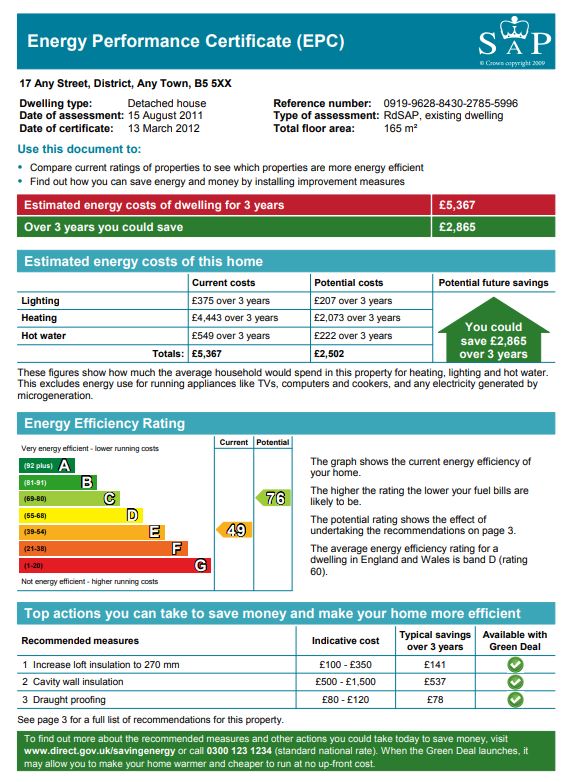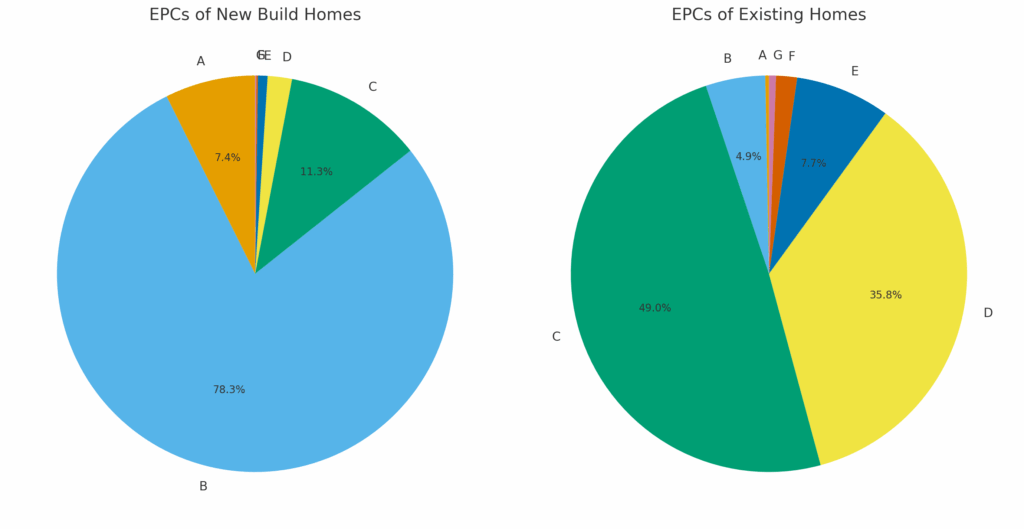
Have you looked at your energy bill lately, or is it too much to handle? That might not be the case if you’re living in a new build home. Energy bills in new builds are often said to be cheaper, but is that true? And — if so — why do new builds save so much more money on energy bills?
New builds receive higher EPC Ratings for energy efficiency than existing builds, which means that their energy bills are cheaper. This is because new builds are:
Keep reading to learn more about the energy-efficient features of new builds and different ways of measuring energy efficiency in your home.
Yes! New builds have cheaper energy bills than existing homes; in 2024, water and lighting bills cost 50% less in new builds thanks to energy-efficient design.
This is largely because 86% of new build homes have an EPC rating (explained below) of A or B for energy efficiency, which are the top two ratings possible. Meanwhile, less than 5% of existing older homes are rated A or B.
There are two main ways of measuring energy efficiency in the home. They are Energy Performance Certificates (EPCs) and EPC Ratings for structural energy efficiency, and Energy Rating Labels for appliance energy efficiency.
An Energy Performance Certificate outlines a building’s structural level of energy efficiency and potential improvements. It includes:
EPCs are valid for 10 years after issue, and look like this.

An EPC rating is a score from A–G that indicates how energy efficient a building is. ‘A’ is the most efficient; ‘G’ is inefficient. This score is determined by the energy performance of elements in your home, such as the material, construction, and insulation of walls, roofing, and flooring; whether windows are double-glazed properly; and the cost-effectiveness of heating and hot water systems.
As of 2024, existing builds in the UK most commonly have an EPC rating of C (49%), while most new build homes have an EPC rating of B (78.3%).

Energy rating labels can be found on household appliances like fridges, freezers, and TVs to communicate their individual energy efficiency. Like EPC ratings, ‘Energy ratings’ score using a scale from A–G. ‘A’ for maximum efficiency; ‘G’ for inefficiency.
Household appliances with energy rating labels typically don’t impact your EPC rating in any way. You don’t need to worry about your EPC rating dropping from a B to a C because your TV is inefficient.
However, your EPC rating can be impacted by appliances which more fundamentally affect your home’s hot water, heating, or lighting, such as water heaters, air conditioning units, and light fixtures and bulbs. If you scored particularly low in any of those areas on your EPC, you may be able to improve your score by swapping to a more efficient appliance, which the certificate will also advise.
New build homes with modern heating, lighting, and water systems come with a fundamental level of energy efficiency that would be expensive to retrofit into an existing home.
Products made before December 2021 use an older scoring system that ranges from A+++ down to G. This system was first introduced in 1995, and more ratings (A+, A++, A+++) were added as technology became more efficient. Eventually, a new, simplified version was introduced in 2021.
New builds often come with many extra features, but there are many regulations which mean every new build is constructed to a higher, more energy-efficient standard. Some energy saving features of new builds are:
Modern regulations are much stricter about the minimum requirements for insulation regarding type and thickness. They also uphold a higher standard of heat retention via double-glazed windows and ‘passive building’ techniques. This allows your home to retain heat better during the cold months.
Besides keeping the heat in, new builds are constructed with better airflow and ventilation in mind. Modern ventilation techniques, such as Mechanical Ventilation with Heat Recovery (MVHR) — which stale air inside with fresh air from outside — allow for newer homes to retain heat while feeling comfortable.
Natural light is prioritised in many new builds to reduce wasted electricity during daylight hours. With larger windows featuring double- or triple-glazing, new builds benefit from the additional light while maintaining the heat.
Not only are new builds often built sustainably, but they also run on renewable energy like solar or wind. Additionally, the UK Government has confirmed that in the upcoming Future Homes Standard, new build homes will have solar panels by default, potentially saving £530 a year on bills per home.
In 2024, the sustainable construction of new builds led to cheaper utilities bills:
Find your future home and start saving on energy bills today with Plumlife. Contact us here to learn more about our amazing range of properties.
| Cookie | Duration | Description |
|---|---|---|
| cookielawinfo-checkbox-analytics | 11 months | This cookie is set by GDPR Cookie Consent plugin. The cookie is used to store the user consent for the cookies in the category "Analytics". |
| cookielawinfo-checkbox-functional | 11 months | The cookie is set by GDPR cookie consent to record the user consent for the cookies in the category "Functional". |
| cookielawinfo-checkbox-necessary | 11 months | This cookie is set by GDPR Cookie Consent plugin. The cookies is used to store the user consent for the cookies in the category "Necessary". |
| cookielawinfo-checkbox-others | 11 months | This cookie is set by GDPR Cookie Consent plugin. The cookie is used to store the user consent for the cookies in the category "Other. |
| cookielawinfo-checkbox-performance | 11 months | This cookie is set by GDPR Cookie Consent plugin. The cookie is used to store the user consent for the cookies in the category "Performance". |
| viewed_cookie_policy | 11 months | The cookie is set by the GDPR Cookie Consent plugin and is used to store whether or not user has consented to the use of cookies. It does not store any personal data. |